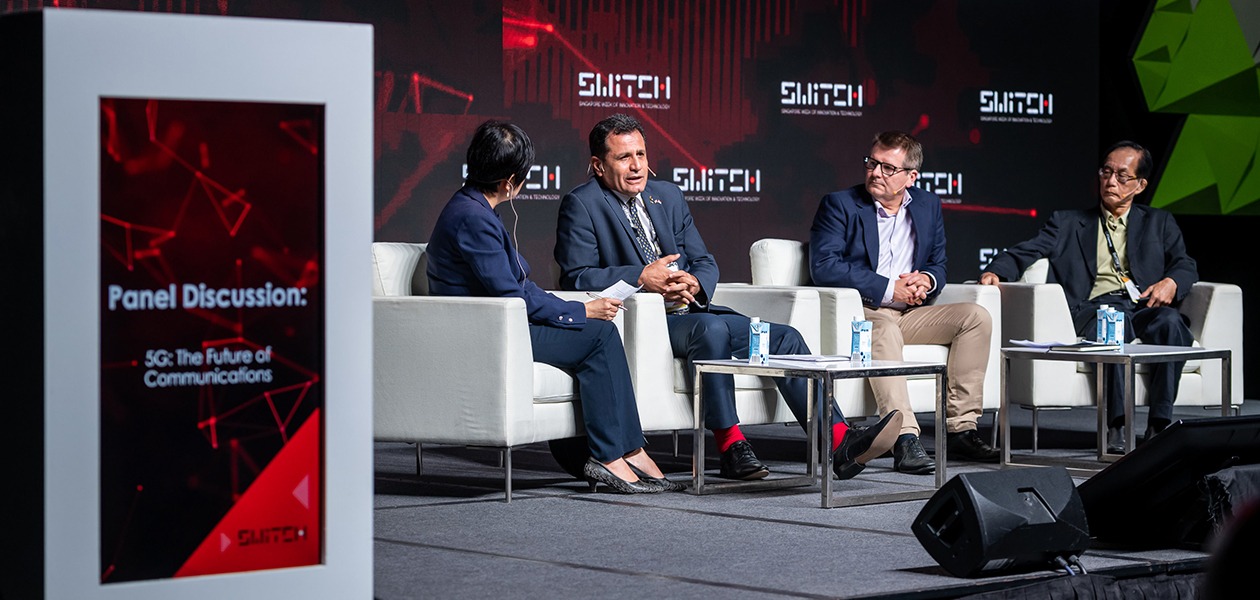Experts discuss the trajectory of 5G technology development and dissect its impact on businesses during a panel discussion at TechInnovation 2019.
Every once in a while, technology comes along that changes the way the world works. The internet was one such revolutionary innovation, providing never-before-seen connectivity across the globe, which in turn became a boon for the global economy.
Since then, society has demanded more connectivity, no longer satisfied with the capacities and capabilities of existing networks. Larger volumes and increasingly varied types of data need to be moved around online as the line between the physical and digital world is blurred. The advent of smart cities, autonomous vehicles and intelligent factories only makes the call for better, faster networks more urgent.
Promising data transfer rates of up to 20 gigabits per second, with extremely low or almost negligible latency, 5G technology may well be the answer to this call. The technology has already made its debut in countries like South Korea and the US, and a study by GSMA projects that the number of 5G connections will reach 1.4 billion by 2025. During IPI’s TechInnovation 2019, a panel of experts discussed the trajectory of 5G development and the impact it could have in the future.
A convergence of ideas and applications
More than just a speed upgrade, 5G should be viewed as a springboard for novel modes of communication and innovation, said Professor Rahim Tafazolli, the Head of Institute for Communication Systems and 5G Innovation Centre at the University of Surrey.
“5G is a special generation,” he quipped. “It cannot be compared with previous generations that were designed for human communication. 5G, in addition to human-to-human communication, was designed to connect many machines together.”
He added that through 5G, machines of different capabilities, such as a factory robot and a motor vehicle, could ‘talk’ to each other and therefore become part of a larger ecosystem of connected machines. This underscores the notion that the economic value of 5G is derived primarily from its ability to bring together many emerging technologies to serve the market, said Professor Tafazolli.
Echoing this sentiment was Colin Bannon, Chief Technology Officer of the telecommunications company BT Global. He described how technologies like edge processing and software-defined networking, enabled through 5G, will allow businesses collect and analyse data at scale to arrive at what he calls the “golden goose” of the business world—end user experience management.
A pleasant end user experience naturally keeps clients coming back for more of a product or service, which is precisely what a business needs to thrive. “Because ultimately, we're starting to sell user experiences rather than just platforms,” he said.
Making progress together
However, before 5G can be wielded effectively to deliver business value, Professor Tafazolli emphasised that organisations will need to talk to one another to understand one another’s needs. “It is not a technology problem. It’s a business problem,” he said. “The technology will be in place; what is not in place is win-win business models.”
Crucially, a dialogue between telecommunications service operators and their enterprise users has to happen. For instance, if an autonomous vehicle company requires tapping on a 5G network to deploy its fleet, then it may have to negotiate with the telecommunications service operator on how to optimise data exchange on the network and figure out a viable pricing model.
In addition, the security of applications running on 5G networks is something that needs to be addressed now, even before the majority of 5G applications take off. “Anything that has software is hackable, right? So if you throw 5G into the mix, you might be creating new vulnerabilities, since things happen much quicker,” said Michael Ang, President of the Association of the Telecommunications Industry of Singapore.
Bannon added that in the interim, the industry may see a hybrid of 4G and 5G networks being used for various applications. This means that enterprises need to factor in multiple modes of security into their products and services, which can be a highly complex process, he said.
Nonetheless, Bannon is optimistic about a 5G future. “The excitement is in the parts we don’t know yet—the unknown unknowns,” he said. “It is innovation in adjacent technologies that will act as catalysts, creating new use cases and solutions that we have not even thought about yet,” he concluded.

